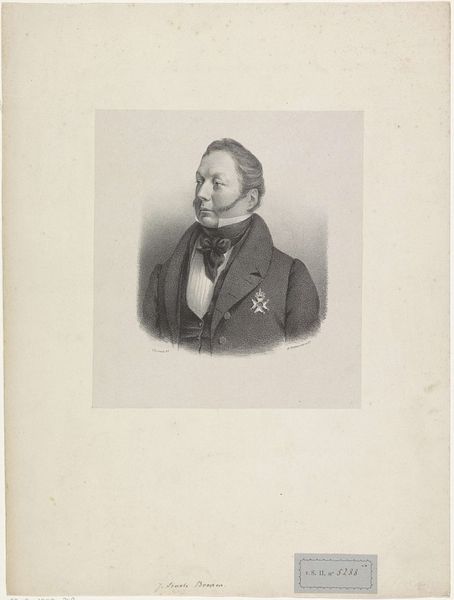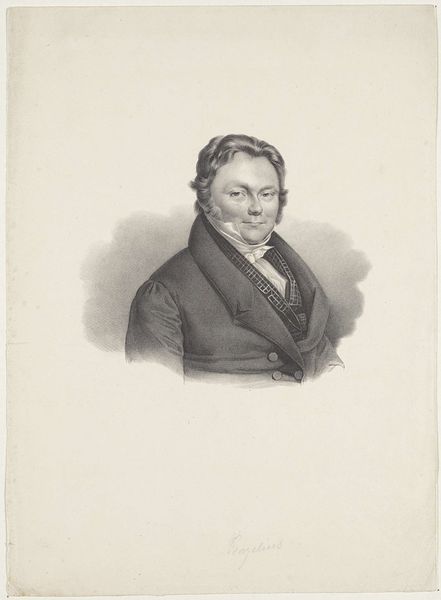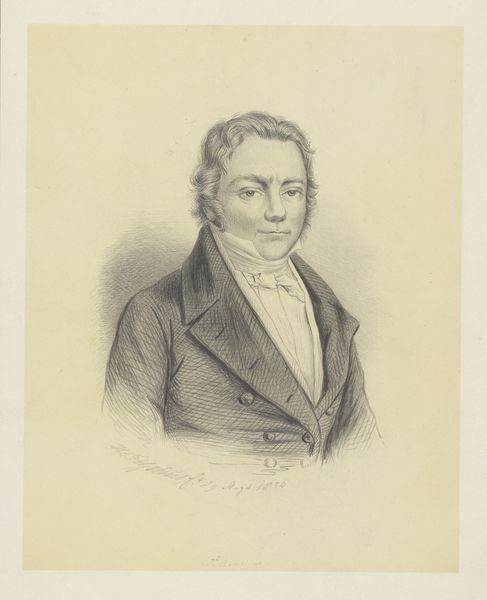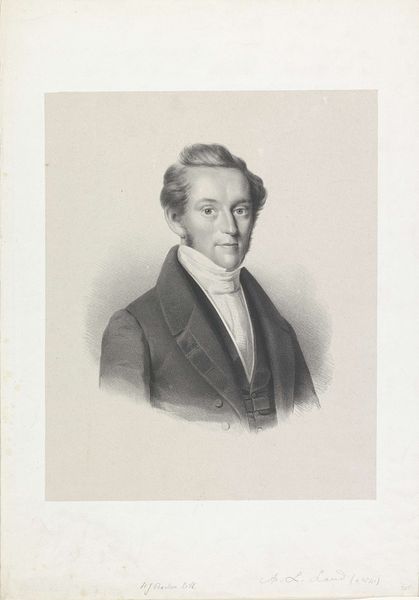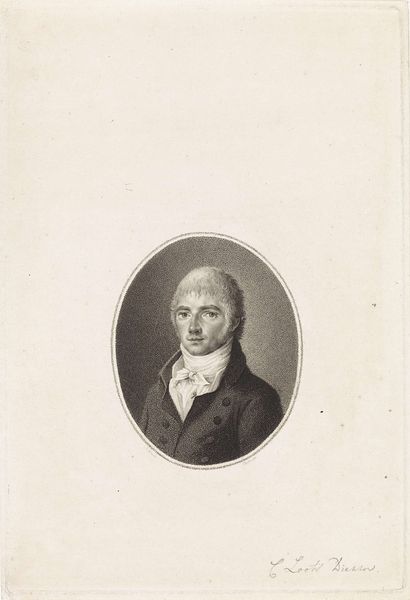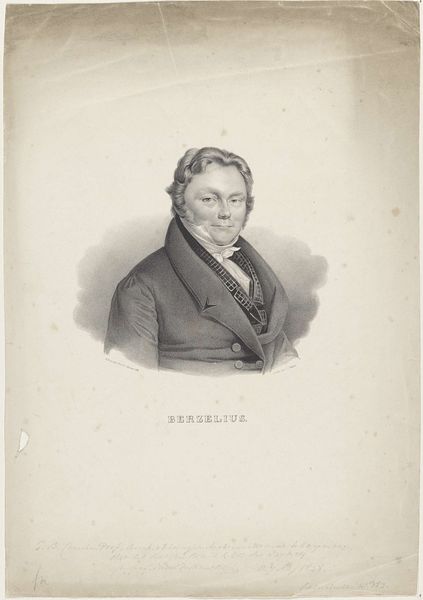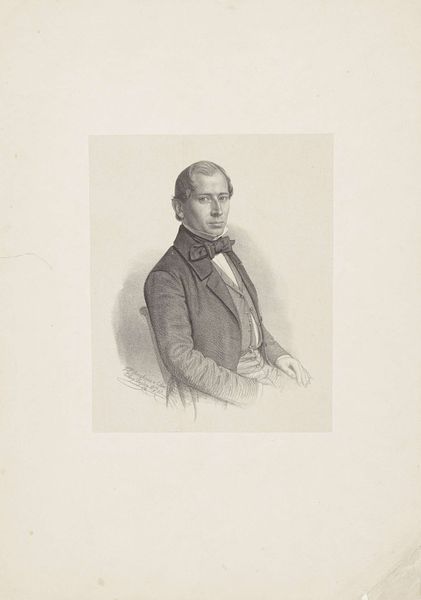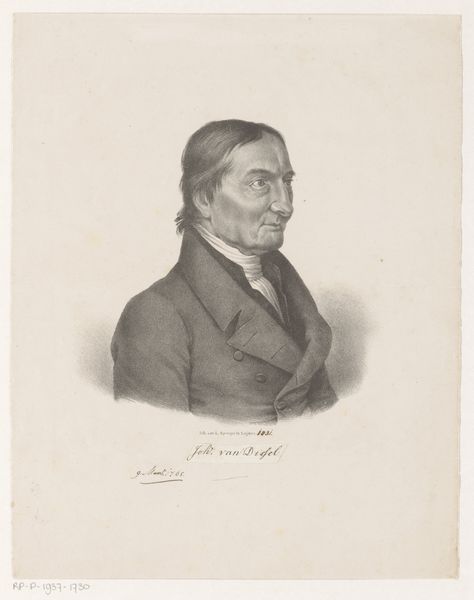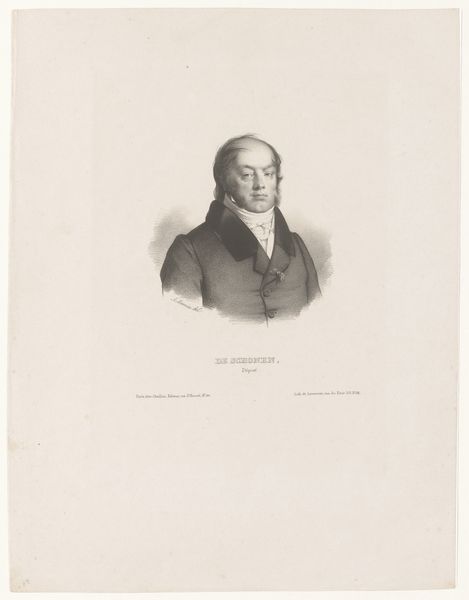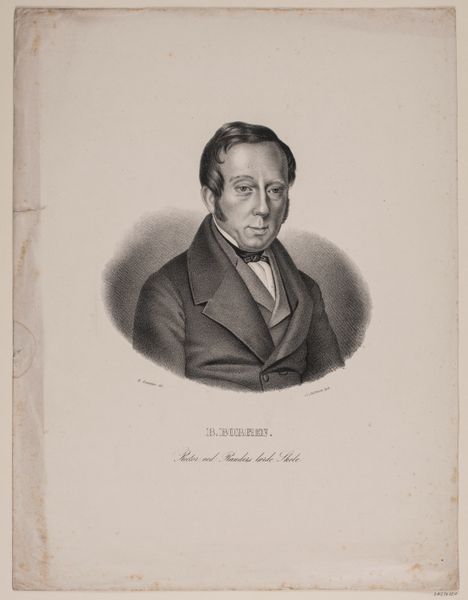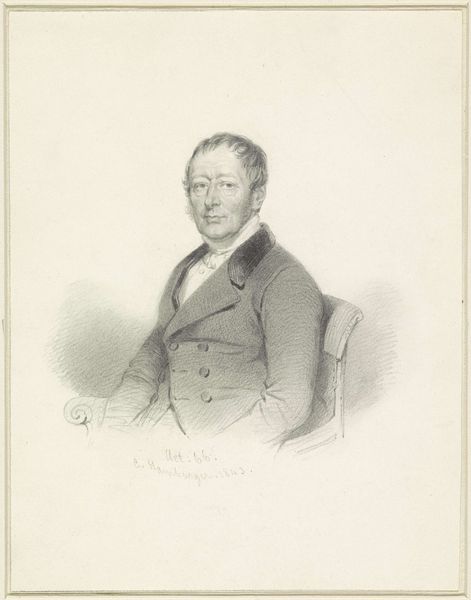
drawing, pencil
#
portrait
#
drawing
#
figuration
#
pencil drawing
#
romanticism
#
pencil
#
history-painting
#
academic-art
#
realism
Dimensions: height 235 mm, width 183 mm
Copyright: Rijks Museum: Open Domain
Curator: We're looking at J.B. Clermans's "Portret van Jan Max. baron van Tuyll van Serooskerken," created sometime between 1826 and 1839. It's a pencil drawing, quite meticulously rendered. Editor: The somber tone immediately strikes me. It’s the grey scale, certainly, but also the way light seems to recede, focusing all the intensity on his gaze. It feels rather formal, doesn't it? Curator: Absolutely. This is a man presented with the seriousness and dignity befitting his station. His piercing gaze carries weight, hinting at both authority and, perhaps, vulnerability. The slightly downward cast of his eyes invites scrutiny of his character, if you will. Editor: Precisely. Look at the precision of the shading, building volume in the face, particularly around the eyes and mouth. It's academic in its commitment to accurate representation, a quality shared with similar portraits of the time. I am thinking about realism as its own construction through meticulous lines. Curator: I see Romanticism reflected in the yearning expression and historical symbolism, perhaps of noble responsibility. The artist seems to have consciously chosen to capture a depth of character and moral sentiment along with physical likeness. Consider what such representations meant in shaping perceptions and memories. Editor: It is more than meets the eye! You read a lot from the downward gaze of his eyes as signifiers; but if we consider this sign a signifier detached from its signified, could the portrait exist on the merit of lines and shading alone? The precision, as I said, does leave room for interpretation, yet the artist's choices dictate meaning in a certain way. Curator: I believe the meaning is intended by the artist; however, history itself continues to shape meaning over time, imbuing artworks with new symbolic associations. The legacy continues. Editor: Very true. Art is never truly still. I learned so much looking beyond symbols. Curator: And I remembered why visual symbols can be worth a thousand words.
Comments
No comments
Be the first to comment and join the conversation on the ultimate creative platform.
